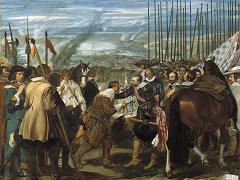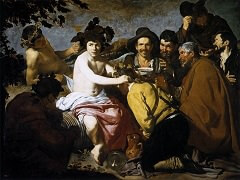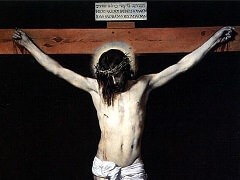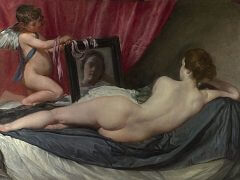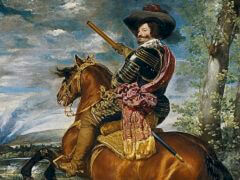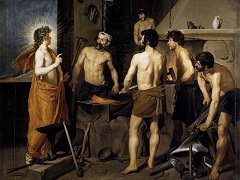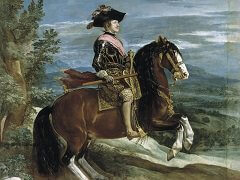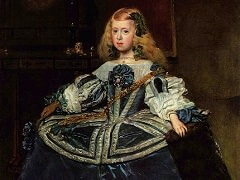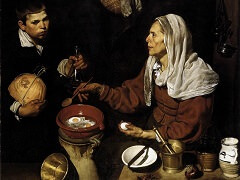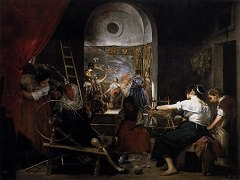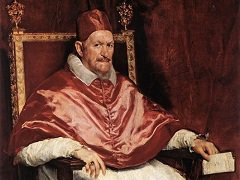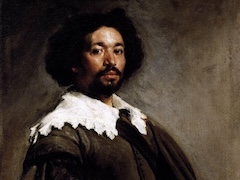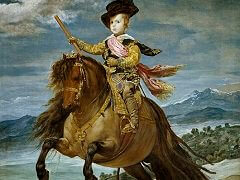Mars, 1638 by Diego Velázquez

Velázquez painted the god of war sitting with all his military attributes: a flare in the right hand, a morion on his head, and at his feet, his armor, shield and sword.
His melancholy air speaks of fatigue and dejection, quite different from his traditional victorious and triumphal appearance, making this one of the finest examples of Velázquez's metaphorical representations. It is related to the images of the philosophers, Aesop and Menippus, with which it shared its destiny, and can be understood as a critical and ironic vision of Antiquity. It has also been interpreted as a possible allegory of Spain's political and military decadence and the defeats suffered by the famous Spanish tercios (infantry regiments).
The composition has been linked to works Velázquez saw during his trips to Italy, such as the classical sculpture of Ares Ludovisi and especially Il Pensieroso, which Michelangelo made for the tomb of the Medici in Florence. Influences of Rubens and Titian are also visible, especially in the combination of colors and the rendering of the flesh tones.
Possibly painted for the Torre de la Parada, it remained there until sometime before 1772, when it was moved to the Royal Palace. Between 1816 and 1827 it was in the Royal Academy of San Fernando.

